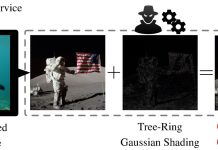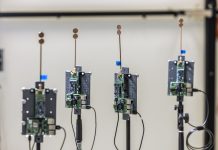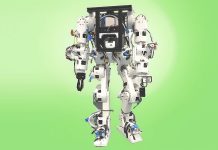
Artificial intelligence (AI) has made remarkable progress, but researchers from the University of Sheffield believe that for AI to truly achieve human-like cognition, it needs to be connected to the real world through robots.
In a recent study published in Science Robotics, Professor Tony Prescott and Dr. Stuart Wilson from the University’s Department of Computer Science explained why disembodied AI systems, like ChatGPT, are unlikely to replicate the processing power of real brains.
AI systems, such as ChatGPT, utilize large neural networks to tackle complex tasks like generating understandable text.
These networks imitate the way the human brain processes information and learn from mistakes to enhance accuracy.
Although these AI models share similarities with human cognition, the Sheffield researchers emphasized crucial differences that prevent them from achieving biological-like intelligence.
The first major difference lies in embodiment. Human brains are connected to physical bodies that can sense and interact with the world.
This physical connection imbues brain processes with meaning and awareness of the surrounding environment—something disembodied AI lacks. Current AI models, lacking direct interaction with the physical world, can recognize and generate complex patterns in data but lack a true understanding of their context.
The second difference relates to the architecture of the brain. Human brains consist of multiple interconnected subsystems, organized in a specific configuration seen in all vertebrate animals. However, this architecture is absent in AI systems.
The Sheffield study highlights that the specific brain architecture and its connection to the real world have played a crucial role in the development of biological intelligence throughout evolution. Unfortunately, this interaction between evolution and development is often overlooked in the design of AI.
Professor Tony Prescott, an expert in cognitive robotics, suggests that current AI systems, like ChatGPT, have achieved impressive feats but are unlikely to reach full human-like cognition unless they undergo a paradigm shift in their design.
To achieve this, AI systems need architectures that mimic the brain’s learning and improvement processes, utilizing connections to the real world.
Robotics can play a vital role in this endeavor by providing AI systems with sensory input, such as cameras and microphones, and the ability to act in the world using mechanisms like wheels and grippers.
By enabling AI to sense and learn from the world around them, they can develop cognition more akin to the human brain.
The researchers note that progress has been made in developing AI systems for controlling robots, especially through the use of recurrent neural networks.
These networks, composed of multiple feedback loops, are trained to make accurate predictions about future events, improving the adaptability of robots.
However, there is still a long way to go before robot AI systems resemble real brains in terms of their cognitive architecture.
Dr. Stuart Wilson, a senior lecturer in computational neuroscience, believes that the next breakthroughs in AI will emerge from mimicking the development and evolution processes observed in real brains.
By examining how real brains control bodies through the creation of artificial brains for robots, scientists can bridge the gap between robotics and neuroscience, leading to exciting advancements in both fields.
In summary, connecting AI with robots offers a promising pathway toward achieving human-like cognition. By enabling AI systems to interact with the physical world and learn from it, researchers hope to overcome the limitations that currently prevent AI from emulating the complexity of the human brain.
The future of AI and robotics holds incredible potential for creating intelligent systems that can perceive, understand, and adapt to their surroundings, bringing us one step closer to a new era of artificial intelligence.



